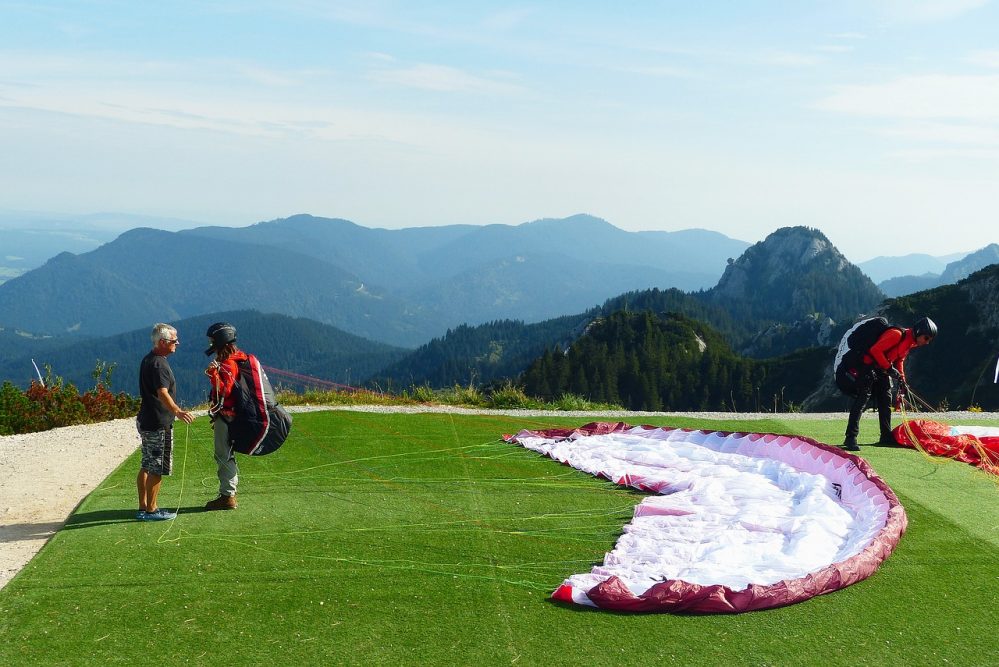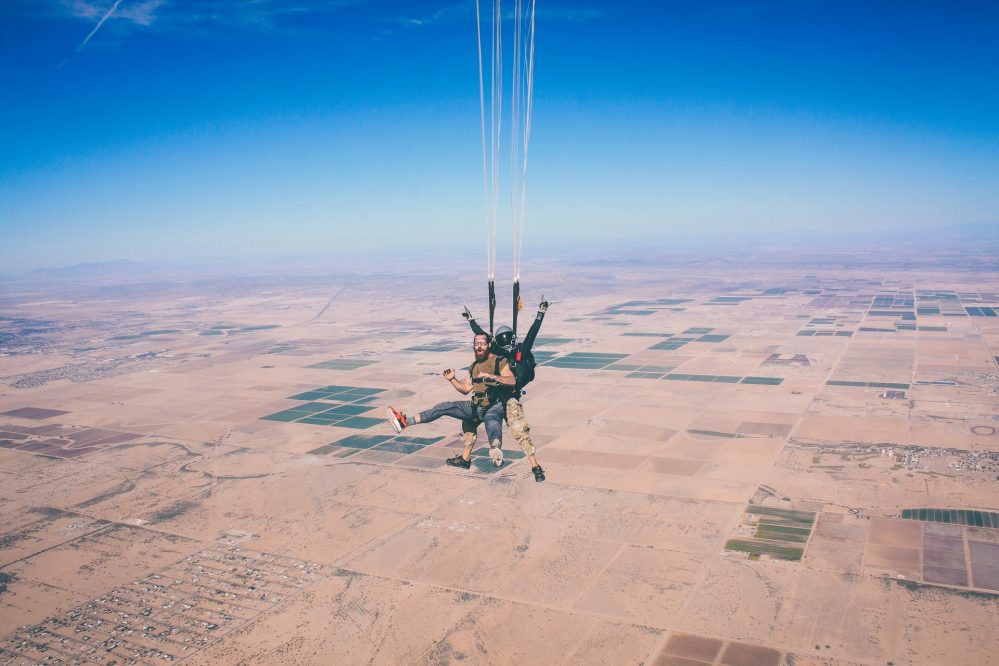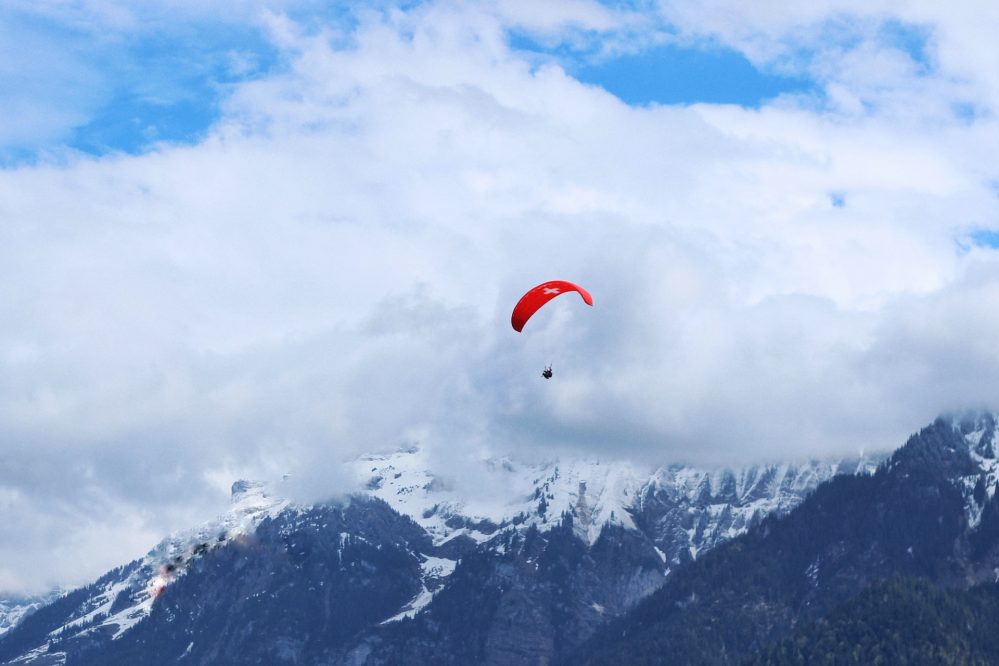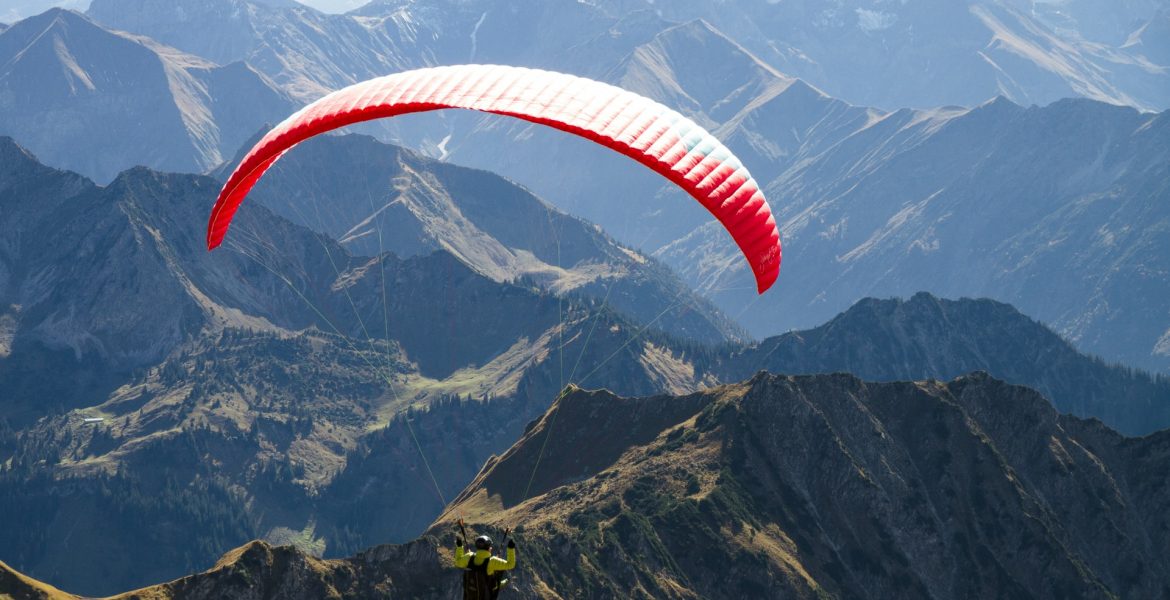Throughout history, humanity has always wanted to find ways to fly. Our desire to see the world from above has brought plenty of innovations to life and continues to do so to this day.
While there have been many attempts to recreate the process of flying, none have come closer to paragliding. People who’ve done it describe the experience as fascinating and almost like being a bird. Can you imagine soaring high up in the sky, feeling free, and looking at the world from a different perspective? Well, that’s what paragliding gives you: the opportunity of a lifetime.
In this article, we’ll discuss some essential facts and tips about paragliding and why Switzerland is one of the most excellent places for this fun activity.
Paragliding in Switzerland
Before you start flying, there’s some important stuff you need to understand about paragliding. Below, you’ll find short instructions and answers to some frequently asked questions.
What is paragliding, and how does it work?
Paragliding is the act of flying with an elliptical-shaped parachute. It’s not like parachuting or skydiving, where you continuously go down but the opposite: you quite literally fly.
Paragliders must start on the ground with their parachutes already deployed, and the wind makes them soar in the sky.
For whom is paragliding suitable?
In the beginning, paragliding was used by climbers and hikers who were looking for an easy way to go down mountains that did not involve walking. But as time passed, paragliding became available and doable by anyone brave enough. Every year, more and more people love this activity despite the risks involved.
How do you take off when paragliding?
 Obviously, you can’t paraglide until you understand how to get off the ground. This process is called the launch. To execute it flawlessly, face into the wind and run forward. Pull on the parachute a little, and it will start filling with air. Immediately, it will turn from a piece of fabric into a full-fledged elliptical parachute that takes you flying effortlessly.
Obviously, you can’t paraglide until you understand how to get off the ground. This process is called the launch. To execute it flawlessly, face into the wind and run forward. Pull on the parachute a little, and it will start filling with air. Immediately, it will turn from a piece of fabric into a full-fledged elliptical parachute that takes you flying effortlessly.
Is paragliding safe?
Paragliding is a relatively safe activity, with injuries happening in 120 to 360 jumps in 100,000. But is skydiving safer than paragliding? While you can never be entirely sure, when compared to other extreme activities, statistics usually show that paragliding is a lot safer.
This doesn’t mean you won’t have to worry about safety. Before your flight, professional paragliding instructors will give you safety tips on avoiding injuries. All that’s left is for you to follow those instructions and enjoy the experience as much as possible.
What equipment do you need for paragliding?
- Wing (the parachute)
- Lines
- Harness
- Reserve parachute
- Helmet
Wing
The wing of the paraglide resembles a parachute and is made of two materials sewn together with space between them. The wings are polyester or nylon fabric, and they trap the air to make flying easier and smoother.
Lines
Lines are cords that attach the pilot to the wing, with four or five rows of lines on different parts of the wing for more stability. These are also used to direct the paraglide and increase/decrease speed whenever needed.
Harness
The harness is the soft chair where the pilot sits below the wing. It has multiple straps to keep the pilot safe and provide back support. Additionally, harnesses work as backpacks, so pilots don’t have to carry one.
Reserve parachute
The reserve parachute is must-have equipment in the event that the wing starts to deflate irreversibly. This parachute is attached to the harness in a spot that prevents the pilot from accidentally deploying it, yet it can be quickly opened in case of emergency.
Helmet
When you’re doing extreme activities like paragliding, a helmet is one of the first things you need to wear. A pilot should never fly without a helmet to prevent fatal injuries to the head in case of an accident.
How much does paragliding cost in Switzerland?
According to Viator, paragliding in Switzerland can cost up to 500 dollars, with cheaper options ranging from $63 to $170. These prices are determined by the flight length, the accommodations, and any other service provided by the pilots.
What is tandem paragliding, and how does it work?
 Tandem paragliding is done by two people under the same wing, usually a beginner and an experienced pilot/instructor. The paraglider is the same as a regular paraglider except for the harness, which is designed for two people. The instructor sits at the back and controls the paraglider, and the only thing the beginner has to do is aid the pilot during the launch.
Tandem paragliding is done by two people under the same wing, usually a beginner and an experienced pilot/instructor. The paraglider is the same as a regular paraglider except for the harness, which is designed for two people. The instructor sits at the back and controls the paraglider, and the only thing the beginner has to do is aid the pilot during the launch.
Tips for Paragliding in Switzerland
Can I paraglide in Switzerland? Of course you can! However, like in any other place, you’ll need to consider some crucial aspects of paragliding in Switzerland carefully. Here are some tips for a more pleasant experience up in the sky.
Research where and when you want to paraglide
if you prefer the cold of winter or the warmth of summer, or if you like mountainous terrain more than valleys, these all affect your decision-making process, so consider your options and pick the ones you like best.
Check the weather beforehand
If you’d like to paraglide during warm days, you’ll need to find out whether or not there’ll be any rain or thunderstorms at the location on those specific dates. You wouldn’t want such a lovely experience ruined by cold, miserable rain.
Dress appropriately
Although there’s no dress code for paragliding, it’s always a good idea to wear layered clothing due to the cold temperatures high in the cliffs and mountains of Switzerland. In case you need to hike to get to the spot, it’s nice to have good mountain boots that protect your feet from the elements.
Communicate with your pilot
If you’re tandem paragliding, don’t feel bad about asking questions and telling the pilot anything of note regarding your experience. Don’t hesitate to end the flight if you feel uncomfortable, as the instructor will oblige and accommodate you.
Have fun
Don’t overthink it; get off the cliff and experience the crisp air of Switzerland, take as many photographs/videos as possible, and live in the moment. This way, you’ll never forget the adrenaline and happiness you had during your flight.
Popular Areas for Paragliding in Switzerland
 You’re probably wondering “Where can I paraglide in Switzerland?”. Switzerland is often thought of as heaven on earth due to its mesmerizing and spectacular views. Looking at this paradise while soaring like a bird is an extraordinary experience, and we’ve compiled a list of some cities that excel at paragliding.
You’re probably wondering “Where can I paraglide in Switzerland?”. Switzerland is often thought of as heaven on earth due to its mesmerizing and spectacular views. Looking at this paradise while soaring like a bird is an extraordinary experience, and we’ve compiled a list of some cities that excel at paragliding.
Interlaken
Is paragliding safe in Interlaken? Interlaken is considered one of the nicest locations to paraglide because of its good weather conditions all year round. The town is situated between two lakes, Brienz and Thun, making for an astonishing view to look at while up among the clouds. Check out more things you can do in Interlaken by clicking here.
Geneva
If you want to fly over a city, why not do it above the beautiful city of Geneva and see the Jura Mountains? You’ll also be able to glance at the Alps’ ranges with a clear blue sky for the background. Truly a lifetime experience.
Lauterbrunnen
Lauterbrunnen is another place where paragliding feels like magic. Get your cameras (and your heart) ready for some of the most jaw-dropping views of the Alps, the Lauterbrunnen Valley, and the Schilthorn. Here are some fun things you can do in Lauterbrunnen.
The Bottom Line
Flying is exhilarating, even more so when you do it in Switzerland. While many sports and activities help reduce stress and make us have a great time, paragliding takes it to another level.
A country meant to be looked at from every possible angle, Swiss paragliding is relaxing and thrilling simultaneously. So, get on that paraglide, conquer your fear of heights, and enjoy looking at the majestic Swiss panorama.
Frequently Asked Questions (FAQs)
Do I need special training to paraglide in Switzerland?
If you’re interested in solo paragliding, you’ll need appropriate training. There are many schools in Switzerland that provide such training. However, for tandem paragliding experiences, no special training is required, just a brief on-site instruction.
Can I paraglide in Switzerland all year round?
While paragliding is possible throughout the year, it largely depends on the weather conditions. The ideal paragliding season in Switzerland is typically between May and October.
What are some famous paragliding spots in Switzerland?
Some of the most popular spots for paragliding in Switzerland include Interlaken, Lucerne, Verbier, Lauterbrunnen, and Davos among others.
Can children paraglide in Switzerland?
Yes, children can paraglide, typically from the age of around 5 or 6. It’s important to check with individual operators as they may have their own age and weight restrictions.
How long does a typical paragliding flight last in Switzerland?
The length of a flight can vary based on weather conditions and specific arrangements, but a typical flight lasts between 10 and 30 minutes.
Can I take my own camera or GoPro during the paragliding flight?
Yes, in most cases, you can bring a camera or GoPro. However, you should ensure it’s securely attached to you so it won’t fall during flight. It’s advisable to discuss this with your paragliding guide or company before the flight.
Do I need travel insurance for paragliding in Switzerland?
It is highly recommended to have travel insurance that covers adventure activities like paragliding. Paragliding carries inherent risks, and it’s important to be financially protected in case of an accident or injury.
What happens if the weather conditions change suddenly during paragliding?
Professional paragliding instructors are trained to handle sudden changes in weather. They constantly monitor weather conditions and have protocols in place to ensure your safety. If conditions become unsafe, they will guide the paraglider to a safe landing spot as quickly as possible.
Can I go paragliding if I wear glasses or contact lenses?
Yes, you can go paragliding if you wear glasses or contact lenses. If you wear glasses, it’s recommended to secure them with a sports strap. If you wear contact lenses, goggles can be worn to prevent them from drying out.
Can I paraglide if I’m pregnant?
For safety reasons, it’s generally recommended that pregnant individuals do not participate in paragliding. If you’re pregnant and still want to paraglide, it’s essential to discuss this with your healthcare provider and the paragliding company.
Are there any weight restrictions for paragliding?
Yes, weight restrictions usually apply for safety reasons. The specific range can vary, but generally, participants should be between 45kg (100 lbs) and 110kg (242 lbs). It’s best to check with the paragliding company for their specific weight limitations.
What if I have to cancel my paragliding trip?
Cancellation policies vary by company. It’s important to check the company’s cancellation policy at the time of booking. Some companies may offer a refund or the ability to reschedule if you cancel within a certain period before the flight.
Can I go paragliding with a disability?
Many paragliding companies aim to be as inclusive as possible and may be able to accommodate individuals with certain disabilities. It’s best to discuss your specific needs with the company to understand what accommodations can be made.
How do I choose a reliable paragliding company in Switzerland?
Look for companies with certified and experienced pilots, positive reviews, and comprehensive safety protocols. They should also have appropriate insurance and be able to provide clear information about what the experience entails.
Is it possible to do a paragliding course in Switzerland if I’m not a resident?
Yes, Switzerland offers various paragliding courses for both residents and visitors. Just make sure to check the duration of the course to ensure it fits within your travel plans.


